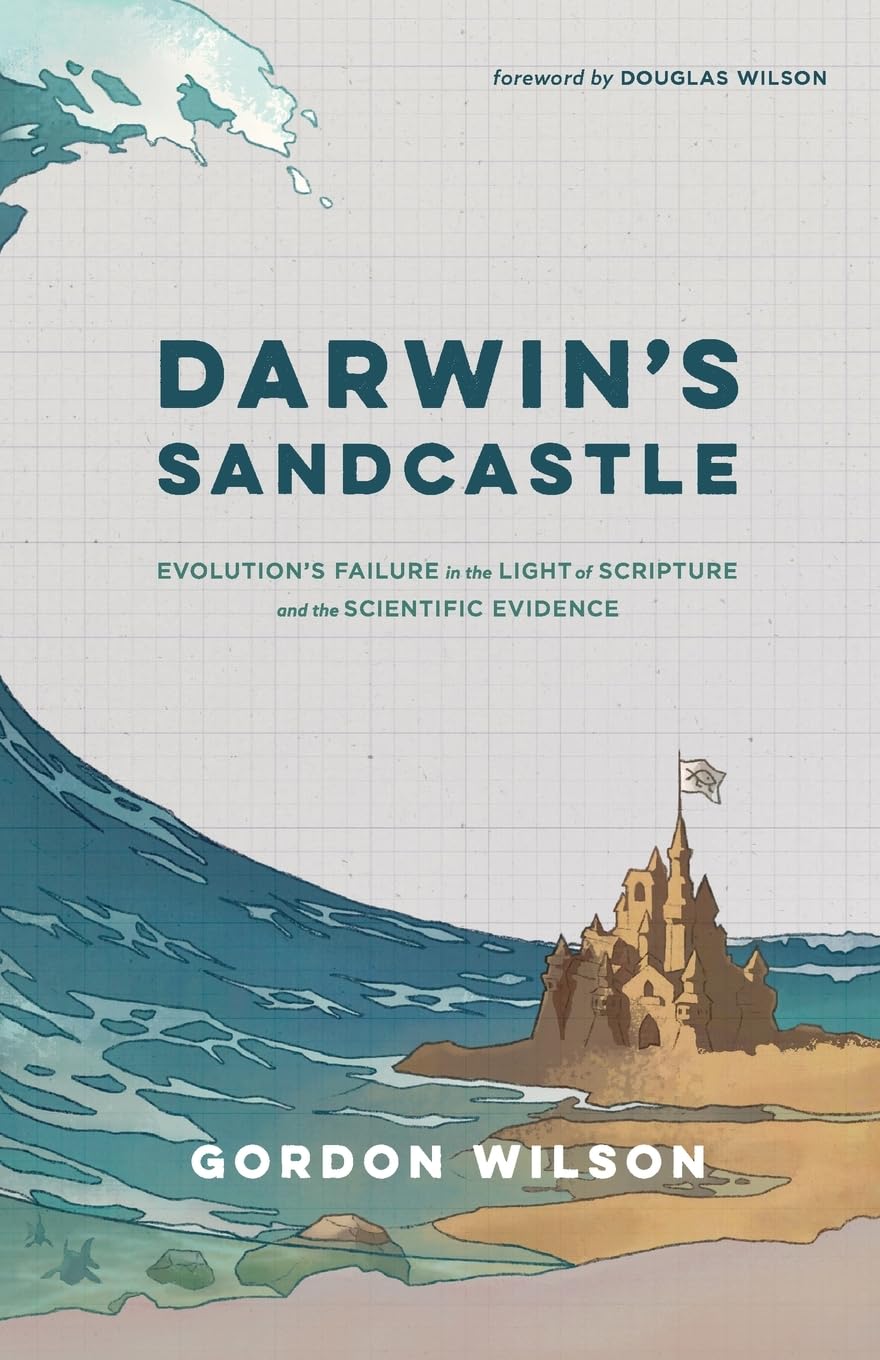The genius of the English language, many people say, is that it freely borrows from other languages. For example, the term “déjà vu” is French and it means “already seen.” We might more readily say “been there, done that!” Another equivalent expression is “nothing new under the sun.” Indeed some things are just so-o-o-o predictable. Among current events, none seems more aptly connected to the term déjà vu than the resistance of established scientists to criticism, any criticism, of their views.
Our image of science, of course, involves the objective examination of data. Are there competing views? By all means let’s look at the evidence. However, in their December 2002 opinion piece, the editors of Scientific American define science as “conclusions vetted by the professional community.” In this context “vetted” means declared acceptable. It seems reasonable to ask how this definition connects with consideration of evidence. If science merely represents agreement among influential practitioners of the discipline, then there is a lot less to talk about. In the same way as they used to say it was hard to fight city hall (entrenched political interests), it similarly seems hard to fight entrenched scientific dogma.
The case of Danish environmentalist Bjorn Lomborg is a case in point. His examination of environmental issues drew little attention in North America until it was published in English in 2001 under the title The Skeptical Environmentalist. The book is 515 pages long and has an incredible number of footnotes. One might have imagined that the book’s optimistic conclusions about our environment would be cause for joy. This was true enough as far as the general public were concerned, but most professional environmentalists were not pleased. Dr. Lomborg’s new book appeared like a threat to their ability to attract research funding, jobs and the attention of government officials.
The environmentalist lobby thus set out to defend their turf and an “extraordinarily bitter row” (Anthony Browne Mar 10/02 The Observer) followed. Highly critical reviews of the Lomborg book soon appeared in many influential scientific journals. The most bitter attack of all was in Scientific American, which in the January 02 issue devoted eleven pages to the Danish book. Four months later, this magazine allowed Dr. Lomborg a one page reply which was itself followed by a lengthy re-rebuttal by editor in chief John Rennie.
According to environment correspondent Anthony Browne of The Observer, this controversy was not really about the state of the world’s environment but rather concerned “the very nature of belief and the way we perceive the world around us.” (Sunday Mar 10/02). The fight, in short, was not over data but over the very nature of science. Dr. Lomborg indeed discovered this when he saw the title of the Scientific American attack on his book. The title in the magazine was “Science defends itself against The Skeptical Environmentalist.” The book’s author protested that this is not a case of “science” against anything. He insisted that his book was factually based and thus scientific. Indeed Dr. Lomborg made a point of clearly stating the data and his sources so that everyone could check them as well. Therefore, he insisted “there is no need to defend science from my book — any possible defeat of science was never the issue. The discussion is whether the statements in my book are correct or not. The need to make it sound like a battle of science against my book seems entirely to misplace and bias the focus.” (Lomborg’s Jan. 4/02 reply to Scientific American). Rather than science against his book, insisted the Dane, it was actually alarmist environmentalism against The Skeptical Environmentalist.
The various critiques of his book, Dr. Lomborg declared, were long on name calling and short on substance. Concerning a critique by World Resources Institute and the World Wildlife Fund, the Danish academic remarked “The fact that they with this long critique could not manage to make any serious charges against my facts seems telling. If I am so wrong, one would imagine that it should be a fairly simple job to debunk me. That they have been completely unable to do so actually seems to strengthen my argument.”
As far as Scientific American is concerned, John Rennie in his re-rebuttal to Bjorn Lomborg’s published remarks, admits that some have also called the Scientific American remarks “weak in substance.” Editor Rennie however claims strength in numbers. Other important journals did the same thing, he says, and no one would imagine they would try to get away with weak arguments, would they? Thus he remarks “Our pieces echo criticisms that have been made in reviews published by Nature, Science, American Scientist, and a wide variety of other scientific sources — not venues where insubstantial criticisms would hold up.” (May 2002 p. 15)
If this controversy is not over environmental specifics, then what is the whole fuss about? Why the bitter confrontation over a single book? The fact is that the vested interests are very angry at Dr. Lomborg’s threat to their credibility. This Danish academic insisted that the establishment conclusions could be reexamined in the light of the data. As he declared in his detailed rebuttal to Scientific American: “And this is exactly my point — we should take the science of these people seriously, but we should not uncritically adopt their evaluation of the problems.” The acknowledged experts however did not want to be subject to such scrutiny. John Rennie concludes his re-rebuttal of Dr. Lomborg with a vigorous defense of the authoritarian position: “By sowing distrust of the environmental science community with his rhetoric, Lomborg has done a severe disservice not only to those scientists but also to the public he has misinformed.” (Scientific American May 2002 p. 15)
The crux of the matter is that the Danish academic thought he could discuss the current state of the environment in terms of the actual data. He is, after all, highly trained in statistics. However when this man was offered only one page in which to defend himself against the Scientific American attacks, he responded by placing a detailed rebuttal on his web page. Under threat of legal action however, he was forced to remove this document from the internet. Soon however, Patrick Moore, one of the founders of Greenpeace and a man who has since changed his views, placed Dr. Lomborg’s defense on his own website. This strategy of threatening legal action, ostensibly for breach of copyright in the quoting of specific attacks, has been frequently used during the last several years to stifle replies. It has happened to creation model supporters, to intelligent design supporters and others. Dr. Lomborg thought a reasonable discussion of the evidence was possible, but he was wrong.
Following these events, some scientists complained to the Danish Research Agency that Dr. Lomborg had displayed “scientific dishonesty” in his book. Following a six month review by a Danish committee, this group released a 16 page booklet, which declared that the Lomborg book falls “within the concept of scientific dishonesty.” The report referred for support to the critique of Lomborg’s book published in Scientific American. This latter journal’s document may lack specifics and a detailed rebuttal may be available, but it is the establishment position that counts. Peter Raven of the Missouri Botanic Garden, commenting on all this, insisted that Lomborg’s position should not be considered as ‘science’ and that the new booklet should bring the Dane’s credibility to a halt. (National Post Friday Jan. 10/03 p. A16)
We thus see that the Scientific American article has been taken as the standard against which to measure Dr. Lomborg. This is very interesting since Stephen Schneider, the first authority in Scientific American to deal with the Lomborg book, was himself quoted in the journal Discover in October 1989 on the subject of integrity in science. What he said was this: “… like most people we’d like to see the world a better place, which in this context translates into our working to reduce the risk of potentially disastrous climate change. To do that we need to get some broadbased support, to capture the public’s imagination. That, of course, entails getting loads of media coverage. So we have to offer up scary scenarios, make simplified, dramatic statements, and make little mention of any doubts we might have.” This is not a very high standard of integrity against which to measure other people.
Thus establishment scientists have done their best to defend their science against attacks on their credibility. Discussion of the data was entirely irrelevant to the case. Indeed, the December 2002 editorial in Scientific American declared that people such as global warming skeptics or creationists, who try to exploit “holes” (problem areas) in science, are pushing a self-serving agenda. All they achieve is to make education of the public by establishment scientists that much more difficult. Anyone is free to disagree with the establishment ‘s view of science, but such dissenters are not reasonable, so say the editors of this journal. The responsible position (they insist) is to make do with authoritarian science whatever its imperfections.
The idea that science merely represents the agreed interpretation of the majority of influential scientists, no doubt seems unlikely to many people despite the misadventures of Bjorn Lomborg. During the past century however a number of cases have occurred where the scientific community has fiercely reacted against contrary views. Alfred Wegener, for example, proposed a version of continental drift which American geologists vigorously rejected at a meeting in 1926. Wegener’s ideas were labeled “pseudoscience”, “superficial” and “manipulation of objective facts.” (Claude Allegre. 1988. The Behavior of the Earth. Harvard University Press. p. 18, 19). It all sounds so familiar. Interestingly plate tectonics ( a version of continental drift) became the favoured paradigm in the late 1960s and remains so to this day. Similarly J. Harlen Bretz declared that the Channeled Scablands of Washington State had resulted from a catastrophic flood. From 1923 to 1963 Dr. Bretz’s views were described as “heresy” by his colleagues. Finally in 1979 the Geological Association of America presented him with the Penrose Medal, their highest award. Everyone had finally decided that Bretz was right. One could cite numerous other cases where establishment scientists have declared that those who disagreed with them were pseudoscientists, dishonest or incompetent. The intent was always to avoid substantive examination of the issues.
It is apparent that discussion of the evidence is irrelevant when science is defined as the majority view. Dr. Lomborg could not win because the establishment controls all the rewards associated with the practice of this discipline. Even many who disagree with the establishment position will keep quiet in order not to attract unfavourable attention to themselves. When Scientific American (in the title of the December 2002 editorial), declares “In Science We Trust” they actually are advocating empty reverence for those in influential positions. We, on the other hand, insist on thinking for ourselves. So do not feel threatened by big name scientists who say nasty things about creationists or those supporting other minority positions. Name calling or ad hominem attack (Latin term meaning “against the man”) is an old strategy. In the end it will become apparent how wrong those name callers are. In the meantime why not read a good book today (we have plenty to recommend) — or even Dr. Lomborg’s discussion of the environment (if you like really big books)!
Moxie
April 2003
Subscribe to Dialogue







